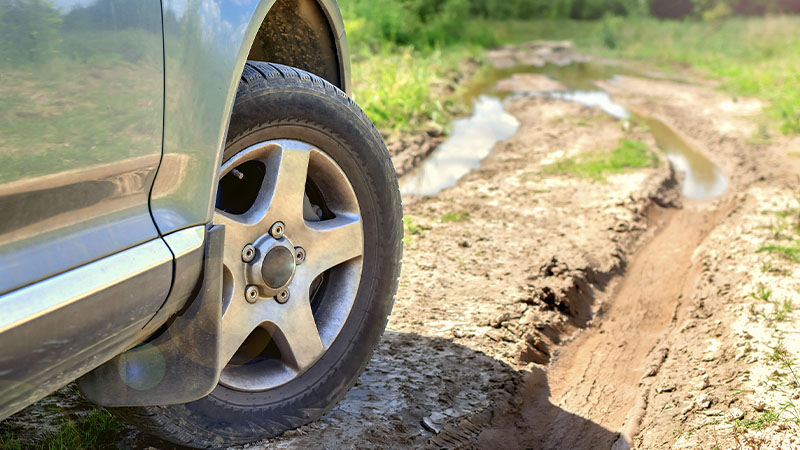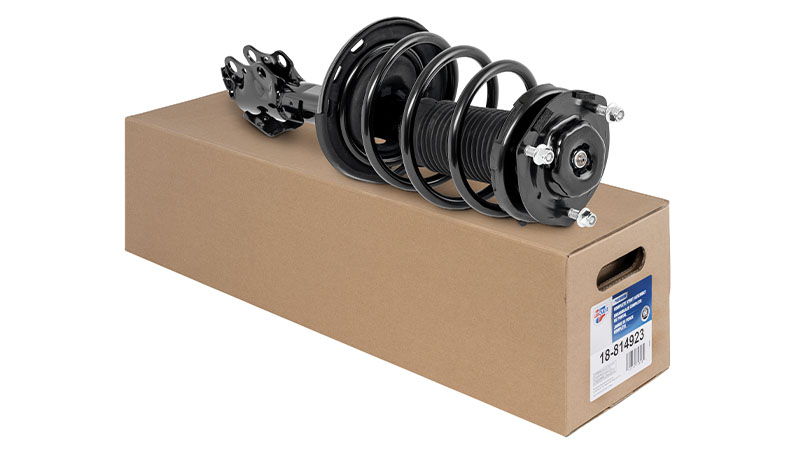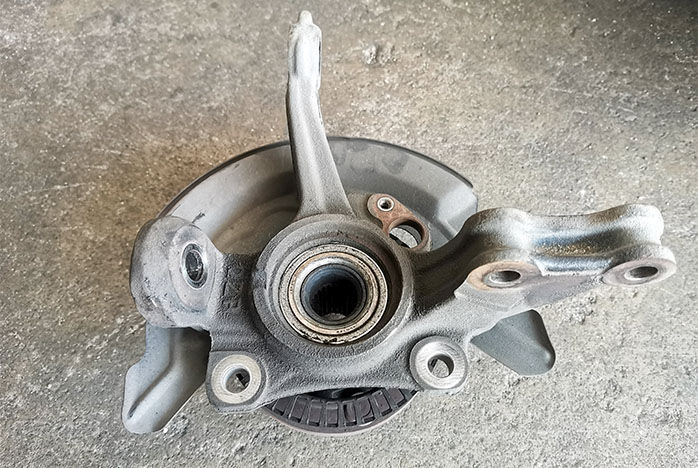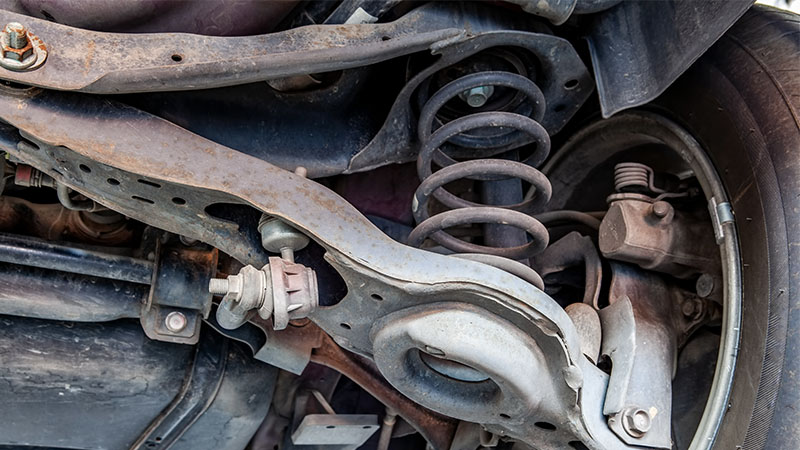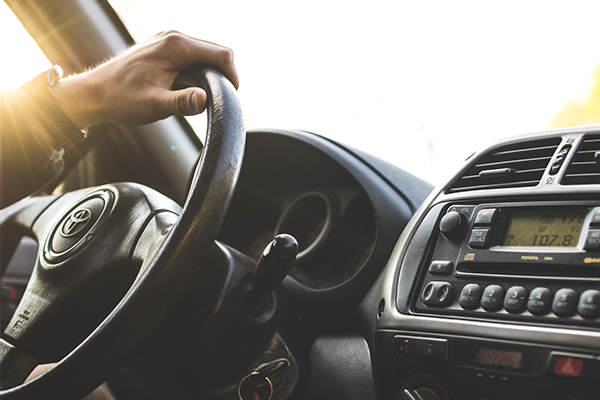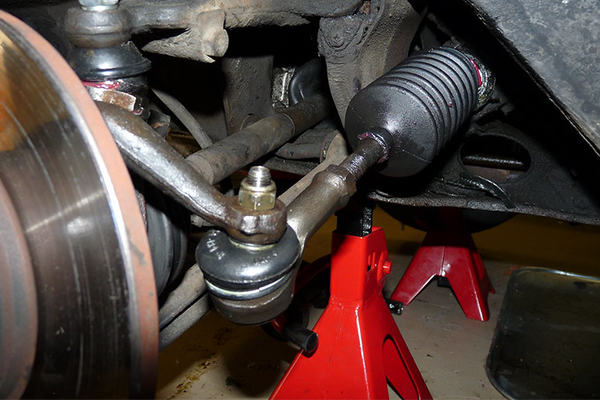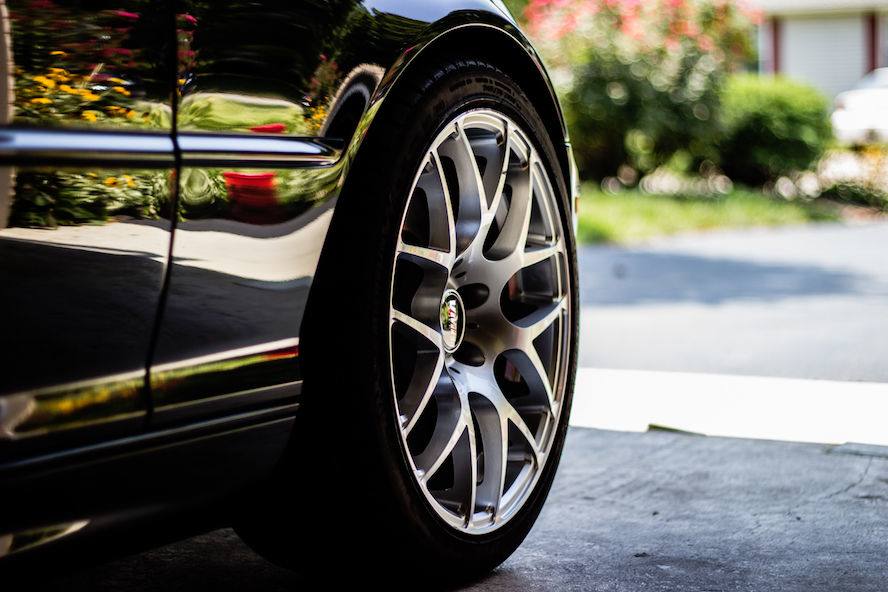A vehicle's suspension has two jobs: one, provide a smooth ride over bumps, and two, keep the wheels in contact with the road so you can safely control the car. Suspension parts wear out over time, and when they're worn, they can negatively impact the vehicle's ability to adapt to road conditions.
Nothing puts your car's suspension to the test, however, like accident avoidance and the accompanying hard braking and sudden weight shifts. In these situations, new suspension parts could mean the difference between going off the road to avoid hitting another vehicle or maintaining control. Don't wait for an accident to learn that your suspension system is failing. Inspect and maintain your suspension system's various components now with this troubleshooting guide that's designed to help get you started.
Shocks and struts
How they work. Shocks and struts are your suspension system's primary and most important components. These two different parts serve a similar function -- limiting suspension travel. They do it by converting spring movement into heat energy, which is then dissipated by hydraulic fluid. The result is a vehicle that doesn't bounce continuously when driving on uneven, bumpy roads. Struts provide structural support and are most common on cars. Shocks are mounted directly to the vehicle's frame on one end and the lower suspension on the other. They are most common on trucks, vans, and SUVs.
Troubleshooting tips. Common signs that your shocks and/or struts need replacing include increased braking distances or the front-end "diving" downwards during stops, unstable steering, excessive bounce, and oil or other fluid leaking from the shocks. Shocks and struts may need replacing as soon as 30,000 miles, depending on the condition of the roads you drive. To tackle this job yourself, read more on the specifics of replacing your shocks and replacing your struts.
Wheels and wheel bearings
How they work. Wheel bearings are located inside the wheel's hub unit. They take on the load of the vehicle and enable the wheels to turn easily on their axle with little friction.
Troubleshooting tips. Noise is usually the first sign of a worn set of wheel bearings. Listen for growling or grinding sounds that change with speed, noises that get louder or softer when turning, or a humming sound that increases as you turn. Because wheel bearings can fail in more than one way, you might also hear chirping or squealing. Also, feel for any wobbling or vibrations that seem to be coming from the tires as you drive.
An average sealed wheel bearing lasts 85,000 to 100,000 miles. Some can last as long as 150,000 miles. In the meantime, a little maintenance goes a long way. Proper application of grease will help your wheel bearings last longer. Typically, you should check and grease your wheel bearings every 25,000 to 30,000 miles.
Worn wheel bearings can cause excessive or uneven tire wear, so check your wheels as well. As a general rule, look at replacing your tires when the wear indicators are showing or when they're nearing an unsafe amount of tread depth remaining after measuring with a gauge. Be sure to check the inner and outer edges, though. Sometime abnormal wear can leave a tire unsafe on the edge while the tread still looks good in the center. If your bad wheel bearings have caused abnormal tire wear, you may also experience more road noise even after replacing the bearings. There is no remedy for tire noise other than replacement, so don't let those wheel bearings go for too long.
On a test drive, it may actually be difficult to differentiate between bad wheel bearings and abnormal "cupped" tire wear. The key is whether or not the noise changes as the weight of the vehicle shifts side to side. Find a low-traffic road where you can safely weave within your lane, and listen to whether the noise changes or stays the same. If it occurs constantly, suspect tire wear. If the noise gets louder or quieter moving from side to side, suspect a wheel bearing. For example, if a right front wheel bearing is worn, when the steering wheel is turned to the left, more noise will be heard because the weight of the vehicle is transferred to the right.
Read more about wheel bearings and how to lubricate wheel bearings to get started.
Coil springs
How they work. Coil springs act as a buffer between the road and vehicle, absorbing and storing energy. There are several coil spring configurations. Some vehicles have a Macpherson strut-shock assembly, which combines the shock and spring into one unit. Other coil spring suspensions have a divorced coil spring and shock arrangement. Some have the shock through the coil spring but don't require spring removal for shock service.
Troubleshooting tips. Signs that your coil springs need to be replaced include when the vehicle sags, droops, and/or handles poorly. Note: When replacing automotive coil springs, replace the shocks as well. But be extremely careful when working with coil springs. The energy of a suddenly unleashed compressed coil spring can be dangerous. Experienced DIYers can tackle this job themselves. Read more on the specifics of replacing coil springs to get started.
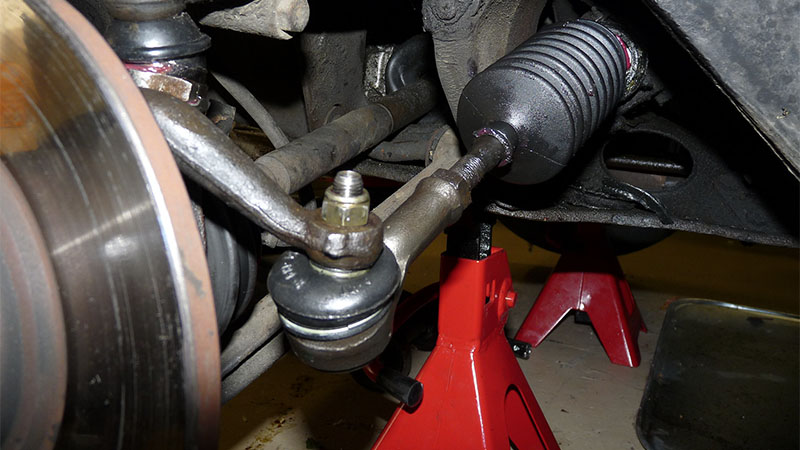
A tie rod end | Source: Craig Howell
Tie rod ends and ball joints
How they work. Tie-rod ends are the final connecting point between your steering linkage and the wheels. The ball joints enable the front automotive suspension to travel up and down and the wheel to turn. The tie-rod ends and ball-joints work together to allow the wheels to steer and move up and down at the same time.
Troubleshooting tips. Worn tie-rod ends and ball joints may cause erratic steering. A clunking sound when traveling over bumps could indicate worn ball joints. A popping sound when you move the steering wheel while parking may herald worn tie-rod ends. If a rubber boot is missing or damaged, chances are the part requires replacement. The rubber keeps dirt out, and grease in. Without grease, auto suspension components quickly fail. To learn more, read about how to replace tie rod ends.
Stabilizer bars and bushings
How they work. The main job of a stabilizer bar, also called an anti-sway or anti-roll bar, is to stabilize your vehicle in a sharp turn and keep it from rolling over. A stabilizer bar is a short rod that connects your left and right wheels, in the front and rear. Stabilizer bars are attached to the chassis via flexible rubber bushings.
Troubleshooting tips. If you experience loose or sloppy handling in your vehicle's steering, you may want to look at replacing the bushings on your stabilizer bars. New bushings will give your vehicle a tight, new car feel again and make your vehicle more responsive in the corners. Replace bushings every 50,000 miles. If your vehicle is leaning into corners, consider using larger stabilizer bars.
